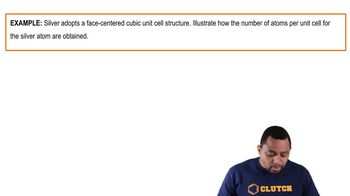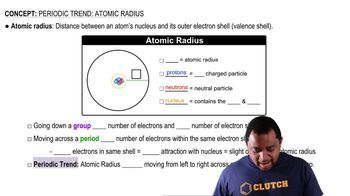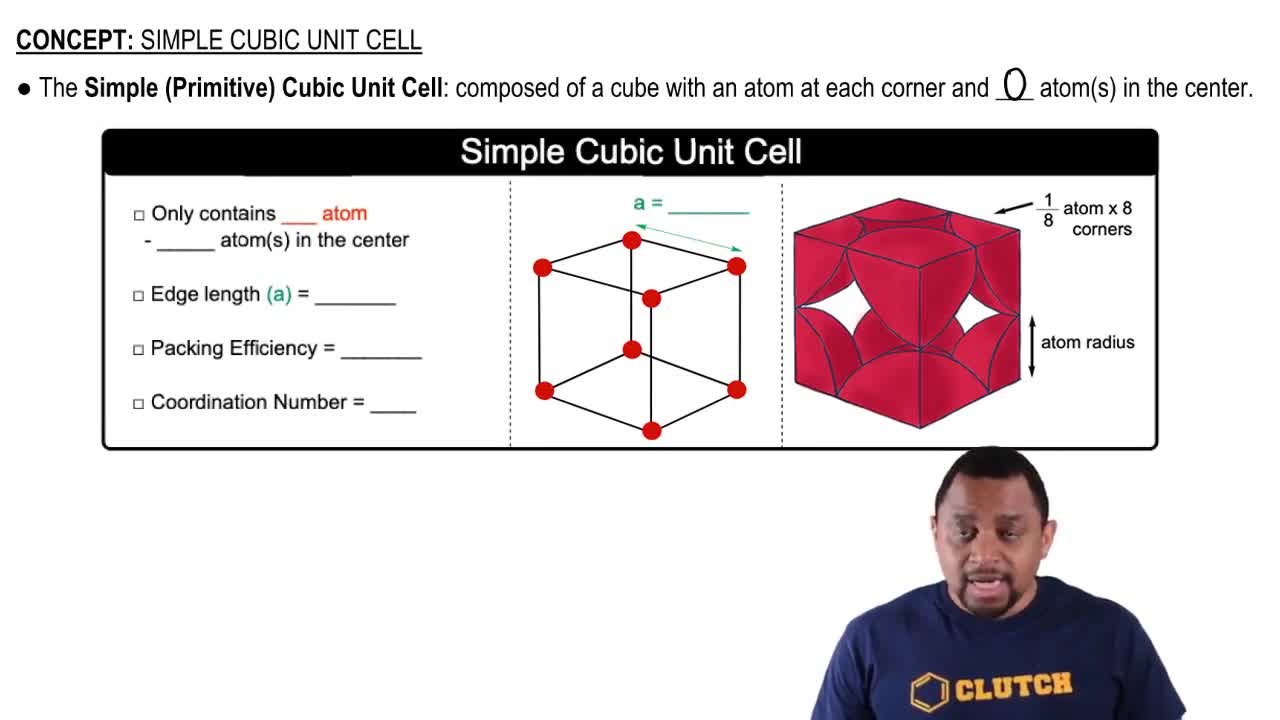Calcium crystallizes in a body-centered cubic structure at 467°C. (a) How many Ca atoms are contained in each unit cell?
Calculate the volume in ų of a face-centered cubic unit cell if it is composed of atoms with an atomic radius of 1.82 Å.
 Verified step by step guidance
Verified step by step guidanceKey Concepts
Face-Centered Cubic (FCC) Structure

Atomic Radius

Volume of a Unit Cell

Calcium crystallizes in a face-centered cubic unit cell at room temperature that has an edge length of 5.588 Å.
a. Calculate the atomic radius of a calcium atom.
b. Calculate the density of Ca metal at this temperature.
An element crystallizes in a face-centered cubic lattice. The edge of the unit cell is 4.078 Å, and the density of the crystal is 19.30 g>cm3. Calculate the atomic weight of the element and identify the element.
Which of these statements about alloys and intermetallic compounds is false? (a) Bronze is an example of an alloy. (b) 'Alloy' is just another word for 'a chemical compound of fixed composition that is made of two or more metals.' (c) Intermetallics are compounds of two or more metals that have a definite composition and are not considered alloys. (d) If you mix two metals together and, at the atomic level, they separate into two or more different compositional phases, you have created a heterogeneous alloy. (e) Alloys can be formed even if the atoms that comprise them are rather different in size.
